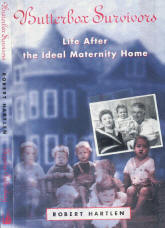
IRELAND
Ireland's "house of tears": Why Tuam's survivors want justice for lost and abused children
A harrowing discovery in Ireland casts light on the Catholic Church's history of abusing unwed mothers and their babies - and emboldened survivors to demand accountability. Sarah Hampsonreports
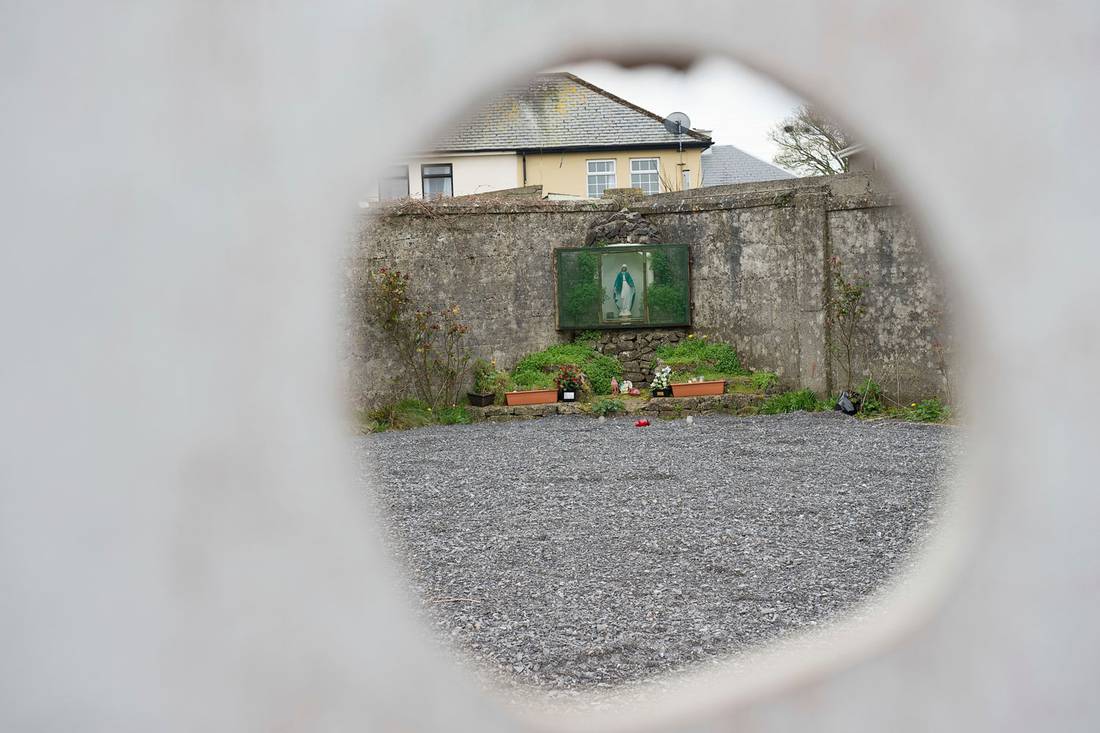
By Sarah Hampson, Tuam, Ireland September 29, 2017
In a small meeting room on the second floor of the Corralea Court Hotel, Patrick McDonagh tells his story in a rushed confession. "It was the way everything was covered up; the way they got rid of me. I was born there. I was there until 6 1/2," says the 63-year-old. He leans forward as he speaks in a hushed voice. On either side of him, others listen, their faces expressionless. They, too, will have their turn to reveal what few of them have spoken about before.
It is early April in Tuam, a town roughly 35 kilometres north of Galway in western Ireland. Downstairs, a restaurant manager has taped childish cardboard posters of bunny rabbits and painted eggs on the walls and windows like a dad doing his best to provide a little Easter holiday cheer for his family. Tuam is a close-knit community with a population of roughly 8,000. People will raise their hands or nod their heads in greeting to each other on the street or in a bar. And some will duck into darkened passageways to let a stranger pass so she can be observed.
But in the hotel's Mitre Room, where Mr. McDonagh and about 30 people have gathered, few know each other. Which is both surprising and disconcerting. Many of them spent the first six or seven years of their lives together. They lived in a former home called St. Mary's that was situated less than a kilometre away on the periphery of town. St. Mary's, which closed in 1961 and was demolished less than 10 years later, was commonly referred to as a mother and baby home, one of several set up across Ireland in the first half of the 20th century. It was run by the Bon Secours order of nuns under the direction of the local authority, Galway County Council.
It sounds cozy, a place of swaddling blankets, sweet baby scents and warm milk. But the reality was horrific. They were homes of abuse and neglect; places of forced confinement for the mothers and where babies were allowed to die - murdered, in effect. Kevin Higgins, a lawyer familiar with the issue, says the deaths were "at least manslaughter." One Irish newspaper has called the scandal "our little Holocaust."
The reason for the homes was simple and rarely questioned at the time. The mothers were unwed; their children often called "devil's spawn." Set up by the government and run by Catholic religious orders, the mother and baby homes were part of a system to deal with the perceived shame of "illegitimate" children and the women who bore them.
The people in the room who were born there call themselves "survivors." They have a peculiar mien that sets them apart - a certain meekness; a fragility; a quiet bewilderment in their acceptance of what they had no choice but to endure.
But, of late, a group dynamic has emboldened them. They have begun to search for justice and an acknowledgment of what happened to them. As with so many atrocities, the responsibility is shared by many. "The government and the church," says one survivor, "I think they're both responsible. We were under their care. The state paid the nuns to care for us." Family members and people in the local communities often knew what was going on but did nothing.
On this occasion, in the Mitre Room, the survivors have gathered on invitation from the Minister of Children and Youth Affairs. This is the first time the government has expressed interest in coming to hear the survivors speak in the town that marked them, years ago.
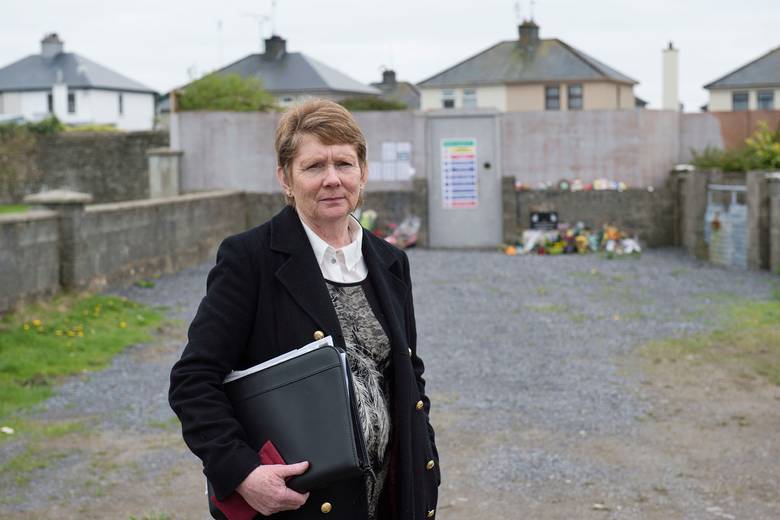
The meeting has come about largely because of the efforts of one woman, Catherine Corless, a 63-year-old grandmother and amateur historian whose sleuthing about the former home has embarrassed the government and galvanized the country to demand answers about what happened. She is in attendance, too, at this meeting as they await the arrival of the government minister, Katherine Zappone.
The anticipation in the room is palpable. What will the minister acknowledge? Will she outline some compensation scheme? Will she be straightforward or evasive? Will she express empathy or utter political bromides? Few have faith in the government to do the right thing. Still, this meeting holds out hope. She has made the effort to come from Dublin - on the other side of the country. Perhaps, finally, they will get something to help make up for the cruelty and deprivations they experienced as children and the subsequent years of grappling with significant repercussions.
For now, the survivors recite their stories of their past or what they can remember of it - in itself, an act of courage after years of feeling it was shameful; something to remain unspoken.
"It's the first time I have met these people," says John Egan, 66. Now living in Limerick, he was born at St. Mary's and was sent to local foster parents at the age of 7. "I can't remember much about my time in the home."
"I think they were all on something," says Valerie McDonagh, wife of Mr. McDonagh.
Mr. Egan, turns to her. "I think so, too," he says.
Drugs, they mean, administered by the nuns to keep them docile. They voice their suspicion, just like that, indifferently, plainly, as if they were offering a comment about the colour of paint.
"Many [survivors] say they can't remember much of their time in the home," Mr. Egan explains politely. He has the demeanour of a boy, clean-shaven, his hair and clothes neat, his hands by his side or folded in his lap.
They're the lucky ones. At least they managed to live through the neglect and abuse.
Forced to take action after Ms. Corless's allegations about a mass grave of nearly 800 children sparked international outrage, the government set up a Commission of Investigation into Mother and Baby Homes in early 2015 to examine the mortality rates and burial practices, among other issues, at 18 state-linked, church-run institutions, the last of which closed in the 1990s.
Weeks before the meeting at the hotel, the Irish government released the shocking confirmation that "significant remains" ranging in age from 35 fetal weeks to two to three years old, and dating back to the time the home was in operation, had been found there in their preliminary excavation. They were not just in unmarked graves. The remains were in an old underground waste-treatment system.
It was a sobering, rueful moment for the Irish government after months of indignant denials from church and state of any knowledge about the dead children who had been under their care. Enda Kenny, Taoiseach (or Irish prime minister) at the time, called the discovery "appalling" and "a chamber of horrors."
Ireland is not alone in having a dark chapter of abuse in a past recent enough to affect living generations. In Nova Scotia, the Ideal Maternity Home of East Chester, operating from 1928 to 1945, was far from ideal. The home promised discreet maternity care for unwed mothers (as well as services for married mothers) and placement of children. But according to Butterbox Babies, a 1992 book by Bette L. Cahill, the owners profited from high fees for residents and adoptive parents. There was also a high rate of infant mortality.
And, of course, with its removal policy of Indigenous children to residential schools, where they suffered abuse at the hands of the church, Canada knows the painful legacy of cultural genocide that demands truth, reparations and healing.
Now, the world is sticking its nose into shy, little Tuam to see how the country will deal with the crisis. This is not the touristy Ireland of raucous bars and lively music. After 9 o'clock on most nights, wind is the only sound through my window in the Corralea Court Hotel, situated at the centre of town. Watching over everyone and everything is the Cathedral of the Assumption, a stony and implacable presence standing back from a main road, like a stern chaperone during a school dance. Attention is not always welcome. "This is bad for Tuam. This is bad for Ireland," one man could be heard saying in a bar about the international story. But others understand that however uncomfortable the scrutiny, global interest is the only way to pressure the government to do the right thing. The result is a dour and sombre mood.
Tuam dates back to the Bronze Age, its name derived from the Latin term tumulus, meaning burial ground. The entire town seems to be gingerly stepping over an underground powder keg of secrets that no one had dared to unearth.
The survivors themselves are quiet and subdued. Seated in rows of chairs in front of a long desk where Ms. Zappone will preside, it's as if they're at school anticipating the arrival of a strict, unsmiling teacher. They have a childlike quality, obedient, their expressions guileless, offering to tell their stories only when asked.
In the ultra-Catholic Ireland of the time - the St. Mary's home opened in 1925 - there were various institutional ways for dealing with poor, unwanted children. "Illegitimate" children were forcibly separated from their mothers, who were deemed unsuitable parents. From the mother and baby homes many were sent to foster homes at the approximate age of 5 for boys and 7 for girls. Others were formally adopted for a fee - mostly to wealthy North American families. And some were shuttled off to residential schools - known as industrial schools in Ireland - when no family, either foster or adoptive, could be found.
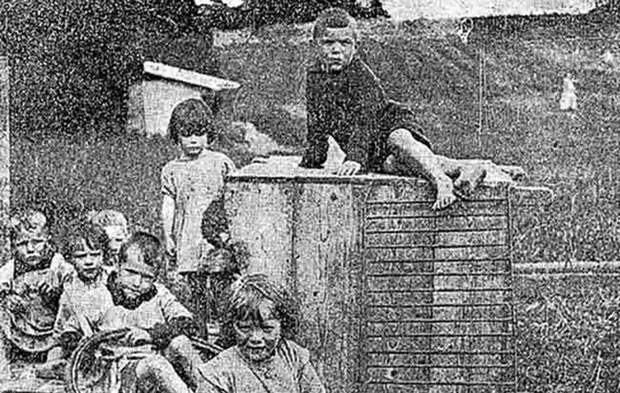
The majority of survivors in the room, all over the age of 60, were sent to foster homes in Ireland. Mr. McDonagh was sent to an industrial school, where he recalls priests' sexual abuse. Those adopted overseas have not been identified or located because of unavailable records and the fact that the investigation has not been advertised in North America.
The children's early years are dark, spooky closets, inviting curious exploration if anyone dares. Information about large-scale vaccine trials performed on children at mother and baby homes is still emerging. It remains unclear if parental consent was ever obtained. Unscrupulous practices were legion. In 2014, The Irish Independent revealed that remains of 474 infants who died in mother and baby homes were sent to Irish medical schools for research and doctors' anatomical training. Again, there was no evidence of parental consent. Recently, evidence came to light that Glaxo Laboratories - a British company - tested lactose and baby formulas in 1974 at one of the mother and baby homes.
The shared experience of cruelty spawns unexpected friendship among the group. Some people go downstairs together to get a bite to eat before the proceedings begin. Small knots of survivors loosen as they turn around to talk to one another, pushing their chairs back and at an angle so they can face each other properly. As they do, their stories tumble out in fractured memories.
Once, a few children saw their reflections in a car window, parked on the road outside the home. They were excited, thinking there were other children inside until they realized they were looking at themselves. They had never seen their reflections in a mirror. Another recalls feeling frightened at the age of 7 when he was driven to a foster home because the fields, the trees, the houses, were all moving. He had never been in a vehicle before.
"A lot of it people would think you were making it up," offers P.J. Haverty of his own previous reluctance to speak about his experience.
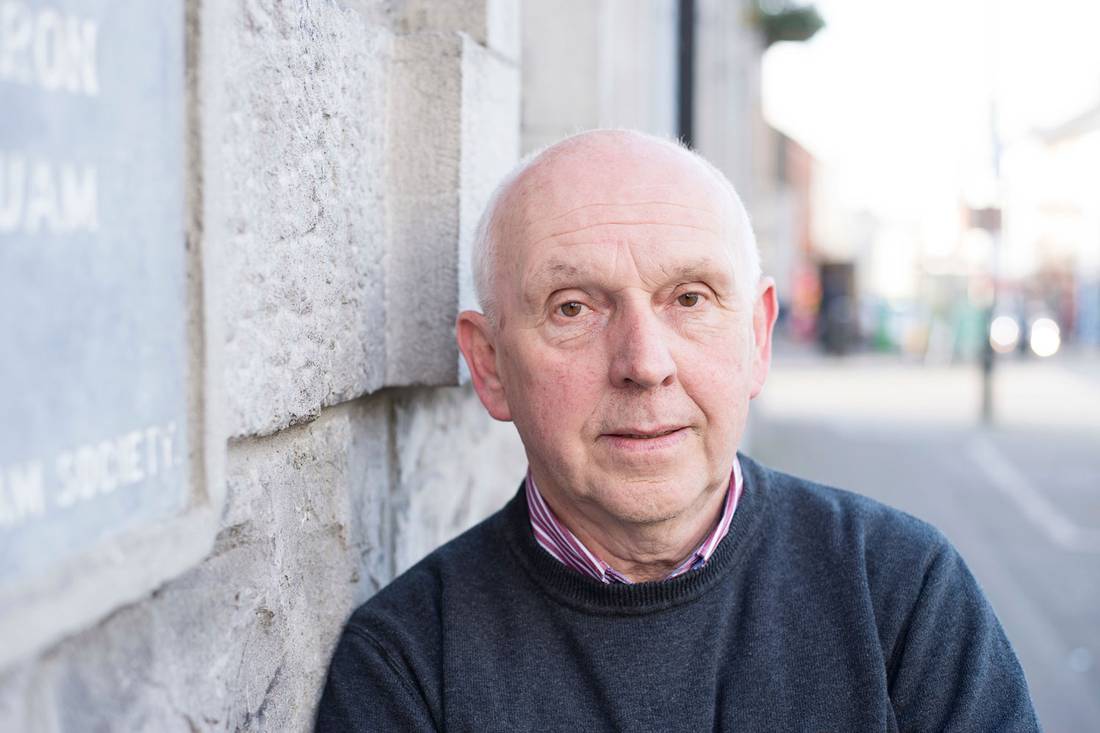
A gentle-looking man, the 65-year-old talks about his birth mother to show that the women, too, suffered.
An unwed mother, she spent five months in the Tuam home after he was born. Then the nuns kicked her out, having arranged for her to work as a cleaner at The Grove, a local hospital they owned and ran.
"Every time she would come up and knock on the door and ask to see her baby, they would just say, 'Go away. You're not fit to be a mother.'" She still came looking for him when he was sent to a foster home. "She went to the priest to ask for me from the foster home to bring me to England. The priest said no."
In the mid-1970s, Mr. Haverty met his mother for the first time, after searching with the help of a nurse. "She was worried I was going to blame her," he says. She had later married but had no other children. For years, she would begin to write letters to him through his foster mother but never followed through. "She said she thought she didn't have the right to interfere in my life," he explains. His tone of voice is dulled; matter-of-fact. "She stuck to her faith all her life," he continues after a pause. "She never turned her back on the church. She never blamed anyone."
"You're lucky you found her," says another survivor, seated close by.
Many of them have been unable to trace their birth mothers, blocked from knowing that part of their own story. And some of those who were able to find them faced further rejection. Almost 20 years ago, P.J. Doran found his mother through a hint someone had given him. He discovered he had been the result of rape when she was 17. Her brother knew of her pregnancy. But no one in the family made any attempt to contact Mr. Doran or find out where he was after his birth in the home. His mother went on to have more children when she later married. "I arranged to meet them," he says of his half-siblings. "But it never happened. It is upsetting. I was hoping we would make a bond. We suffered at the hands of others," he tells me. "Nobody gave a damn about us."
The only requirement to take in a foster child at the time was to be a practising Catholic. The availability of children was advertised in local papers. Mr. Haverty says that his foster mother picked him from a group of children in the home because he happened to look up and smile at her. Some foster families were looking for labourers on the farm or for help in the house. "I went from the frying pan into the fire," says Peter Mulryan, 72, who spent the first 4 1/2 years of his life in the home. He was sent to a foster home with a mother in her 70s and a son in his 50s. "I spent most of my time looking after [the mother]," he says. "I worked like a slave, beaten for no reason." Once, his caregivers put stinging nettles in his pants. Another time, he was put in a bag, hoisted over his adult stepbrother's shoulder and carted off to the bog; told he would be left there in a hole. "Shocking treatment," he says in a dignified way as his wife looks on. "I got no loving care whatsoever."
The state gave foster parents an incentive - paying them to look after the child until the age of 18. The system of inspection to follow up on children who had been sent to foster homes was deeply flawed, experts say. The prevailing attitude was that the "illegitimate" children were lucky someone wanted to take them in. No one I spoke to recalled any visits, let alone interventions. After the children came of age and the support payments from the state stopped, many of the foster families pushed the children out of their homes, leaving them to fend for themselves.
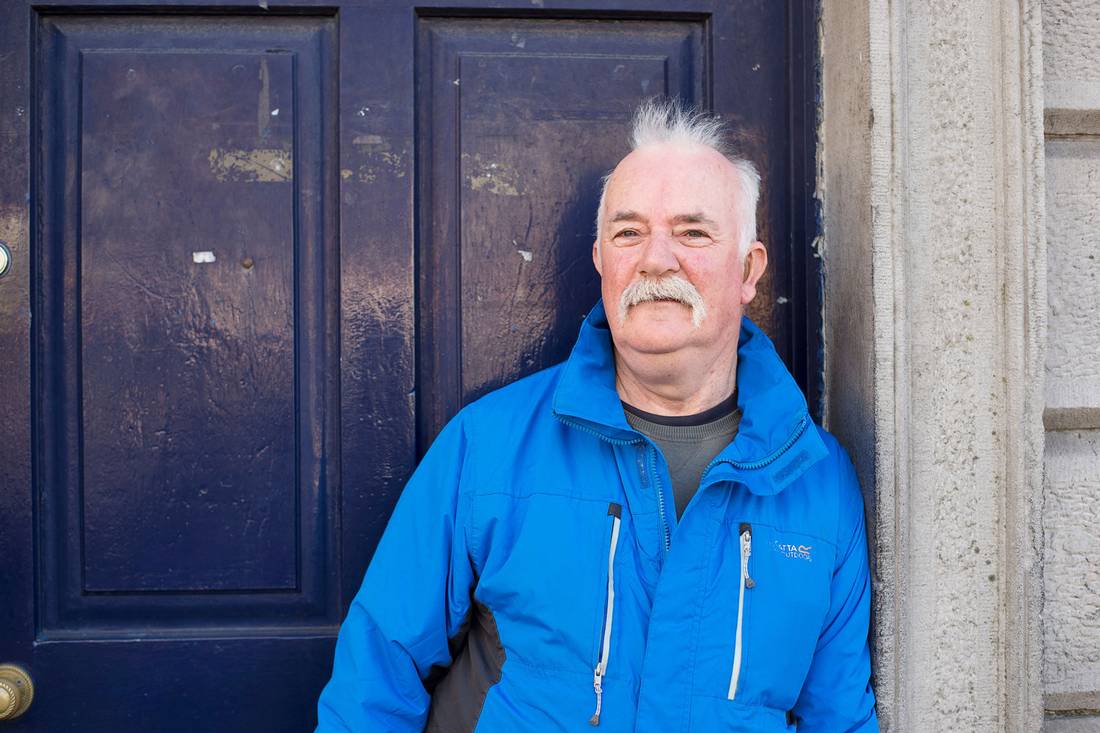
St. Mary's was also a home for abandoned or orphaned children. Patrick Duffy's parents were married, but his mother died during his birth. His father, who couldn't cope with being a single parent, sent his three daughters to a convent and asked the parish priest what he should do with his son. The priest suggested the home in Tuam. From the age of three months until seven years, Mr. Duffy lived there.
"The nuns are part of the teaching of Christ, I thought," he says. He is 65, but looks closer to 80, white-haired with hearing aids in both ears. "To me, they're monsters, and the state is monsters. This country is a terrible place," he continues.
Shards of memory emerge, hurtful and sharp. He was beaten around the head, he says, permanently damaging his ears. "If you spilled any food, you had to get down on the floor to eat it," he says. "And if you go to the toilet on the bed, you sleep on it."
When he was 7, the nuns planned to send him to St. Joseph's industrial school in Letterfrack, northwest of Tuam. But a relative begged some family members not to let him go. "She said, 'If you put him in there, he'll come home in a box,'" he recalls. Established in 1885 by Dr. John McEvilly, then Archbishop of Tuam, the Letterfrack school later became notorious for sexual abuse and neglect of its charges, closing in 1974.
Mr. Duffy was put in an ambulance - the home's transportation of choice as The Grove hospital was down the road. "I didn't know what was going to happen to me," he says. He was taken to the home of his aunt, who had briefly cared for him after his birth. He gobbled biscuits he was so hungry, and immediately vomited. Seeing turkeys in the yard, he grew frantic, not knowing what they were, and ran out to grab them by the neck, killing them by swinging them around. His aunt "was always crying for me," he says. He lived with her until the age of 9 and then lived with his father until he was 20.
"I had a hard time," he admits. "No education. Every time I heard an ambulance, I would hide. I thought it was coming for me. Fear, fear," he says urgently, sputtering his anguish. "I was too afraid to go out to work." Since 1979, he has been on disability. He drank to combat his anxiety. He has seen psychiatrists and is now on medication for his phobias.
As people come and go from the room, Ms. Corless moves purposefully among them, leaning over to talk to them, handing out papers. A mother of four and grandmother of seven, everything about her is neat and efficient: her average height, slim build, her short reddish brown hair, clipped enthusiasm, her brief flashes of shy smiles. There is no sense that she enjoys her new-found fame as the canny researcher who uncovered a scandal that has garnered worldwide attention.
It all started in 2012, when she wrote an essay in a local history journal about the Tuam home. The following year, after more research, she had found death certificates for 800 children at the home during its years of operation. They died of communicable diseases, dysentery and "marasmus" or malnutrition, among other causes. When she cross-referenced the names with local burial records, she could find only four. The rest, 796 infants and toddlers, she believed, were in a mass grave in an area of low-cost housing, built on the former grounds of St. Mary's by Galway County Council. As some now allege, death certificates for some of the babies may have been falsified so the nuns could also sell the children illegally to wealthy adoptive American families through the network of the Catholic Church.
Many critics pounced on Ms. Corless at the time for making an assumption that the remains in the grave area, which locals had long known about, were those of the missing children. Many believed that the bones dated back to the Great Famine of the mid-19th century. (St. Mary's had had a Dickensian start, built by the British in 1841 as a workhouse for people classed as "paupers" and opened just as the potato famine took hold, forcing many to seek shelter there.)
With confirmation that the missing children were in the mass grave, Ms. Corless located survivors of the home as well as relations of the deceased. She introduced them to each other and helps them in any way she can. "I don't look at it as working for justice," she explained to me later. "I hadn't an option. I looked at it that way. I just had to do it."
"We are just ordinary people," says Walter Francis, 75, looking over at her. "We knew nothing until Catherine started."
Now, they're able to corroborate each other's experiences, like siblings who never talked about a common caregiver suddenly discovering a lost part of the history that formed them.
And yet there's no sense of elation. Instead, an odd stillness runs through the emotion of most people in the room, an institutionalized way of being, perhaps, inured to abuse, even when reliving it; unaccustomed to feeling they have a right to fight or question poor treatment. Mostly, they appear grateful for the kindness of people who will listen.
"Everyone in this room has a right to know who their family is, who their mother is. It's what we all take for granted when we are born. But these people have been denied records," says Amanda Larkin in a pointed manner. At 32, she is acting as an advocate for her mother, Carmel, 67, a Tuam home survivor who sits docile beside her. Various health authorities and government offices have given incomplete and contradicting information or none at all, she says of her efforts to help her mother identify her own mother and any living relations.
Authorities "were hoping to be able to wait long enough for most of [the survivors] to die off" to avoid paying redress schemes for the abuse, the younger Ms. Larkin says with obvious disgust. But now, if the survivors aren't able to fight, she and others will do it for them. "We don't want sympathy. We want answers. We're not victims. We're survivors," she states defiantly.
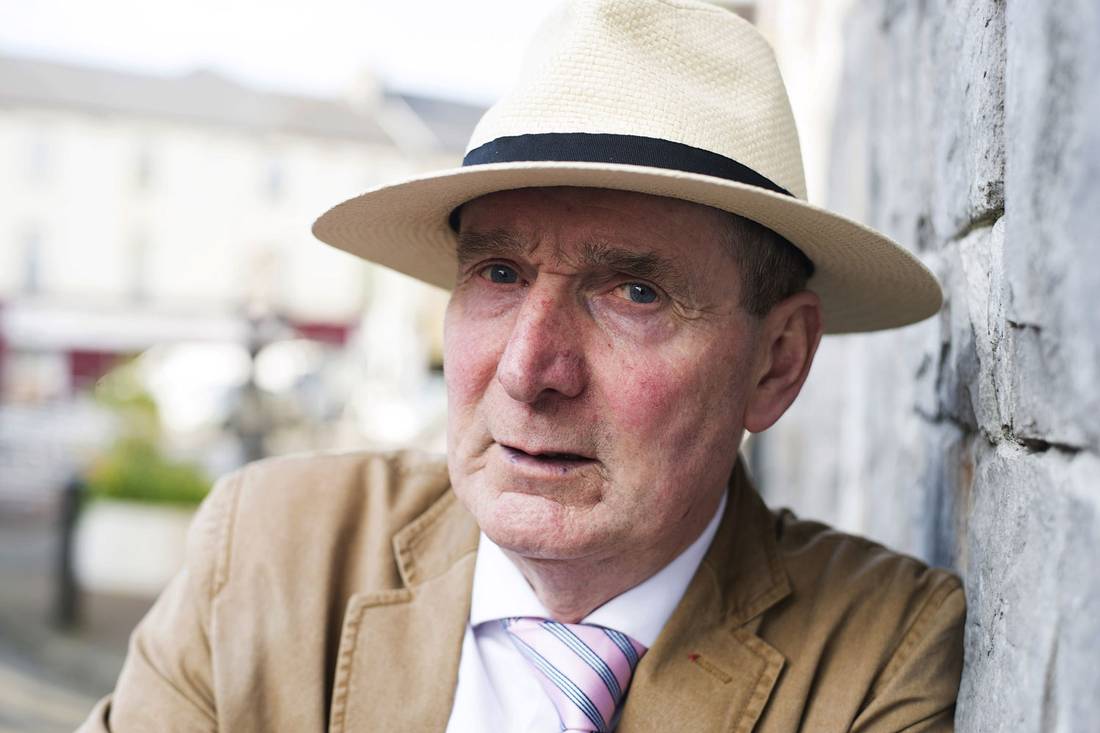
If residential schools in Canada were an outcome of colonization - a policy to assimilate Indigenous people into white Euro-Canadian culture - mother and baby homes in Ireland began as a result of the inverse: part of an effort to renew national identity in the wake of independence from Britain. The Irish Free State came into being in 1922, and in the decade that followed, a "joint alliance" of state, Catholic Church and lay groups set out to "recover a historic (or mythical) Irish chasteness," writes Diarmaid Ferriter in Occasions of Sin: Sex & Society in Modern Ireland.
The church, historically powerful as the highest moral authority, together with the new government, drew up a twofold institutional "scheme" for upholding the Free State's myth of purity.
"First offenders" at becoming pregnant out of wedlock were sent to mother and baby homes. Different homes had varying policies, but generally the mothers stayed for a year, concealed from society. Then, if they were good and obedient, working for nothing and having paid sufficient penance for spiritual rehabilitation, they could be sent home - without their children. "Your secret would be kept and the price you pay for that is you give up your child," comments James Smith, an Irish-born English literature professor at Boston College and author of Ireland's Magdalen Laundries and the Nation's Architecture of Containment, who has no personal connection to the mother and baby homes.
Some of the children - the cute ones, says Ms. Corless - were adopted at a price in North America, often without their mothers' consent. John P. Rodgers, a survivor of St. Mary's and an author who wrote a memoir about his experience, For the Love of My Mother, now being developed as a Hollywood film script, believes that the available photographs of the home were part of a marketing ploy. "These beautiful photographs of nuns in religious garb taking care of the children with chubby cheeks, white ankle socks and shoes, neat dress, it's a real film shot. I realized that was a staged photograph," he says in an interview.
The nuns would send letters to families describing little girls and boys they had available. "One report of an Irish health department in 2012 suggested that perhaps 1,000 children were trafficked from the Tuam institution alone," Prof. Smith says.
Unmarried women who had become pregnant more than once were packed off to a Magdalene Laundry, where they often remained for the rest of their lives. The Magdalene Laundries or Asylums, named after Mary Magdalene, a prostitute turned devout follower of Jesus Christ, were church-run institutions in which so-called "fallen" women were illegally incarcerated as slave labourers. The young women were forced to wash and iron laundry in an effort to clean away their sins.
The residential institutions were "all part of the machinery of the state. We had the highest population of incarcerated people in the world in the 20th century," says Katherine O'Donnell, professor of philosophy and formerly of women's studies at University College Dublin. "It was 1 per cent of our population, even more than in Russia, and most of those were poor women and their babies."
Several reports on abuse in religious residential institutions - the Ryan Report in 2009 on clerical pedophilia, and in 2012 the McAleese Report on the Magdalene Laundries - have been insufficient, according to several United Nations committees, lawyers and human-rights activists. During the investigation into the Magdalene Laundries, information surfaced about a high infant-mortality rate at the Tuam baby home. In 2012, Prof. Smith submitted information about a government survey in 1948 which showed a death rate of more than 50 per cent for children under a year born in the Tuam home. It was not included in the McAleese report.
In 2013, Enda Kenny officially apologized for the Magdalene Laundries, after years of lobbying by the group Justice for Magdalenes - a welcome acknowledgment, many point out, but "the McAleese Report is a travesty as far as accountability and any kind of investigation into gross human-rights violations," says Maeve O'Rourke, a lawyer in Dublin who works pro bono for Justice for Magdalenes, which, together with UN committees, continues to press the government for transitional justice, a combination of judicial and non-judicial measures. This summer, the United Nations Convention Against Torture (UNCAT) for the second time examined the Magdalene Laundries issue, pointing out the shortcomings of the government's redress scheme; failure to investigate in an independent manner; and lack of access to religious archives, among other concerns. They also mentioned the ongoing mother and baby home investigation, urging the Irish government to conduct a thorough examination and allow access to information. The UN condemnation is affirming but toothless, say the activists. But many hope a sense of shame in the international arena will motivate the government.
The Irish government "has to get this right they can't bury it any more. Tuam blew it up in their faces," says Mari Steed, co-founder of Justice for Magdalenes, and a U.S.-based activist for the last 20 years with a variety of adoption advocacy groups.
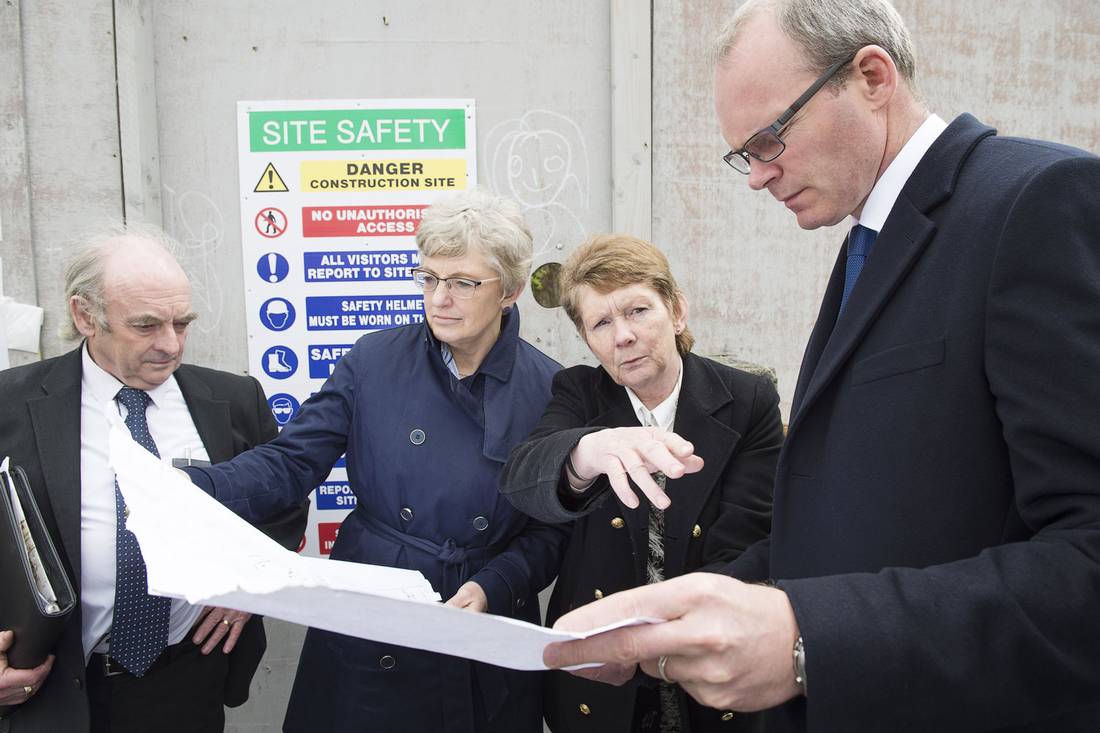
Death is a fact. Let the poets be the ones to dress it up as more. It is stark, finite, a sombre reality. Nothing spares us from its heartbreak. So there are no words. Not really. Not in this circumstance. In Tuam, the mass grave for children is in a children's playground. Let that fact sink in: two worlds, one above, one below, one laughing, one silenced. There is a climbing frame. There is a grassy area. The area is unremarkable, but for one thing. Across the street, mere steps away, is Tuam's main Catholic graveyard. Some graves there are festooned with decorations like floats in a civic parade. Yes: a stunning geographic Burial practices at the mother and baby homes varied and are under investigation. The church has not been helpful. Despite the gruesome reality of the scandal, the children's mass grave in Tuam is where government ministers start when they sweep into town for meetings about the investigation. Since the early 1970s, after local boys came across children's bones when they lifted a concrete slab on what was then an overgrown part of the grounds, neighbours in the housing estate tended the area, erecting a small grotto to the Virgin Mary. Now, it's unsightly, enclosed by construction hoarding, the grass covered with gravel after the excavations. The politicians go there to pay their respects. Of course. But let's not avoid the truth: It's a photo op, too, intended to show action about a tragedy.
Before they arrived at the Corralea Court Hotel, Anna Corrigan, a leading activist in the Tuam Babies Family Group, laid out the strategy for the meeting: "We are going to say to Zappone, 'This is what you are obliged to do.' It's no good to say what we want. It's important to say what's required of them." With two stepbrothers whose death certificates suggest they're in the gravesite - or, if their death certificates were falsified, illegally adopted and alive somewhere in North America - she exudes tireless, if weary, determination and desperate hope. At one point, she clasped my arm to tell me that a psychic had told her one brother is living somewhere in Canada. She asked if I could help.
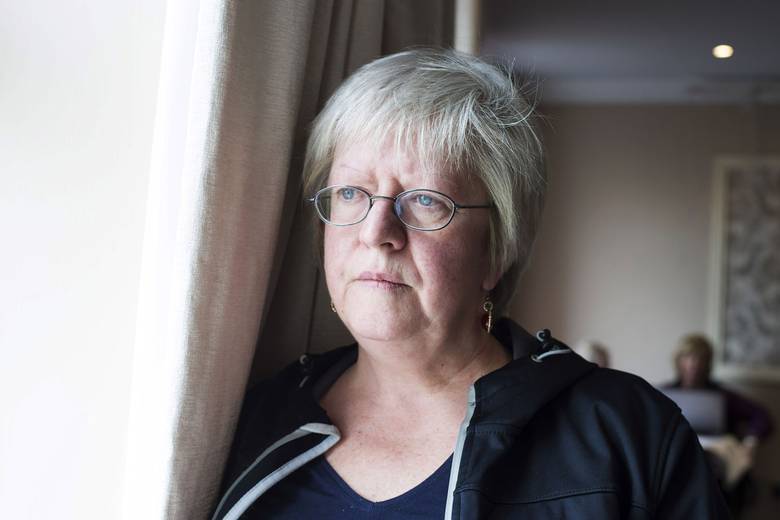
The atmosphere in the meeting was a swirl of anger, defiance, frustration, hope, despair. The activists had come armed with legal arguments, documents and research. Ms. Zappone had arrived with Simon Coveney, Minister for Housing, Planning, Community and Local Government and a leading contender at the time to become the next Taoiseach. (Leo Varadkar was later elected Prime Minister as leader of the Fine Gael Party.) Also in attendance was Kevin Kelly, CEO of Galway County Council. They sat side by side facing the group with stony, inscrutable expressions. Occasionally, they looked down to the table to take notes.
The political posse and the bank of survivors were two separate weather systems - one pushing, the other resisting - along a front with potential for stormy exchange. In the wake of the politicians entering the room, security men rushed in to sternly escort members of the media out. The proceedings could be easily viewed through windows on the doors, and for all the heated, pent-up anger and frustration, the survivors behaved politely, delivering their thunder by taking turns to voice their stories, wishes and complaints. Later, in a show of quiet defiance, they provided The Globe and Mail with a copy of the minutes, the names of some survivors redacted to protect privacy.
On and on, the demands, citations and evidence were presented. The group has records of the deceased babies having been baptized. They could therefore have been buried across the road in consecrated ground. How could the Galway County Council not have known about the mass grave, as they've claimed? The group wants an answer: Did the council give the nuns money for burials?
The police should have been in charge of the site, they state. That should happen now. It should be labelled a crime scene. International best practices should have been followed. They have not been. Construction equipment was used in the excavation of remains: big diggers, not small brushes and instruments. Why would a local coroner, untrained in forensic investigations, be brought in to handle the remains of so many people? No one has been given further information. People fear DNA evidence could be contaminated. They want to claim their family members.
New allegations were raised as calmly and solemnly as a national flag. There are suspicions now that as many as four mothers are buried in unmarked graves there. Ms. Corless helped uncover evidence that suggests the nuns pocketed money from one mother's estate which she had earmarked for her burial. Her grave could not be found in any cemetery. The mothers are likely buried right in the middle of the playground or beneath a small road that cars pass over at the perimeter. People in houses nearby could see over the home's 10-foot walls when it was in operation. There are accounts of them witnessing burials at night. The entire playground area and road should be excavated, say the activists.
At almost every juncture in the three-hour meeting, the politicians offered nothing more than dulcet, infantilizing assurances. There were no announcements. They have come to listen, they said, to help people find closure for "painful memories." They gave no concrete answers to anything.
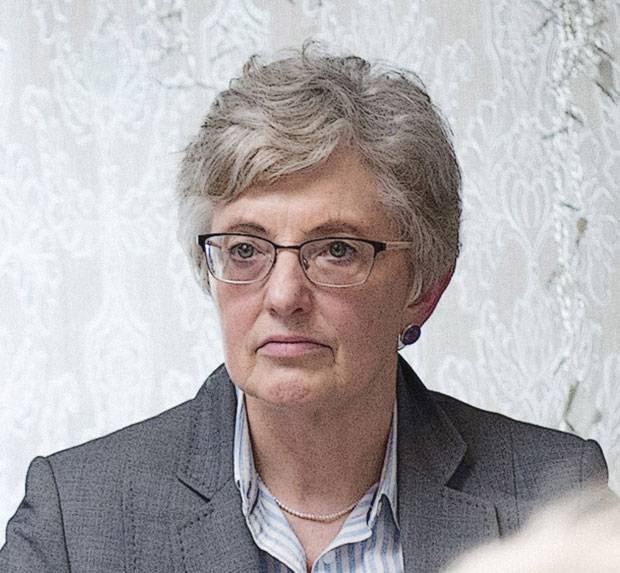
Ms. Zappone, a bespectacled middle-aged woman of serious mien in a plain, boxy jacket and pants, provoked considerable curiosity. She is a feminist theologian who taught ethics and education at Trinity College Dublin, before she assumed the cabinet portfolio in May last year, the first openly lesbian government minister in Ireland. Born in the United States, she married her wife in 2003 in Vancouver, 12 years before gay marriage became legal in Ireland. And there's this: Her spouse, who has since died, was a former nun.
"Friday Tuam meeting again demonstrated how survivors deprived of their family have become a family. Ministers should fear them," Kevin Higgins, the lawyer involved with the group, later tweeted.
It's true. They're empowered. But despite feel-good political listening sessions, the pain endures.
"I have no interest in the social component of this. This should be a criminal investigation. Babies died from malnutrition. And then there was a cover-up. I don't trust any of them," said Anna MacKay, who had travelled from Manchester, England, to attend the meeting.
"It's too big a story. If they were honest, they would be looking at a wider remit of the history of mother and baby homes, the adoptions, the clandestine brokerage that was going on. They would be laying their cards on the table, the exact opposite of what they've done."
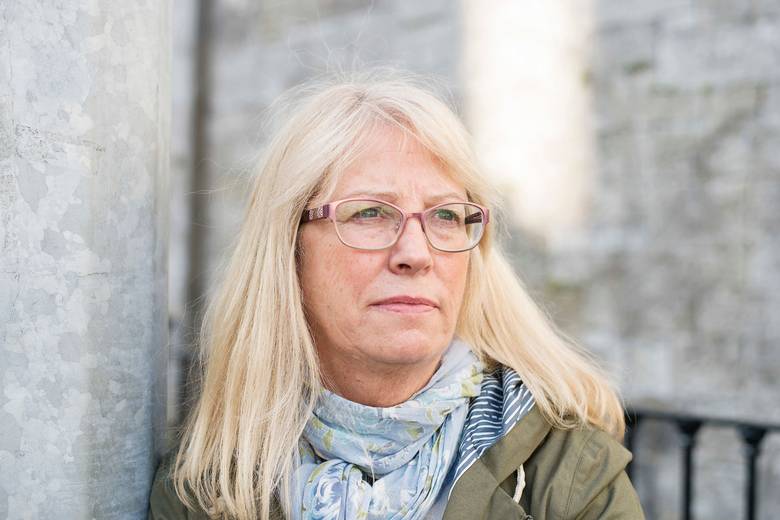
When Ms. MacKay, one of six children her mother later had in marriage, saw the list of missing babies, she identified her half-sister's name. It was only at the age of 70 that her mother told the family about the child she had had out of wedlock, the result of rape at the age of 17.
"I promised myself - ," the 63-year-old said through tears, pausing to compose herself - "that I would do my best to find the baby. At least do the decent thing because there is no decency in this story. There is no compassion."
Behind us, the politicians mingled with the survivors. Ms. Zappone put her arm around some of them as she posed for a group photograph. Some of them smiled for the camera.
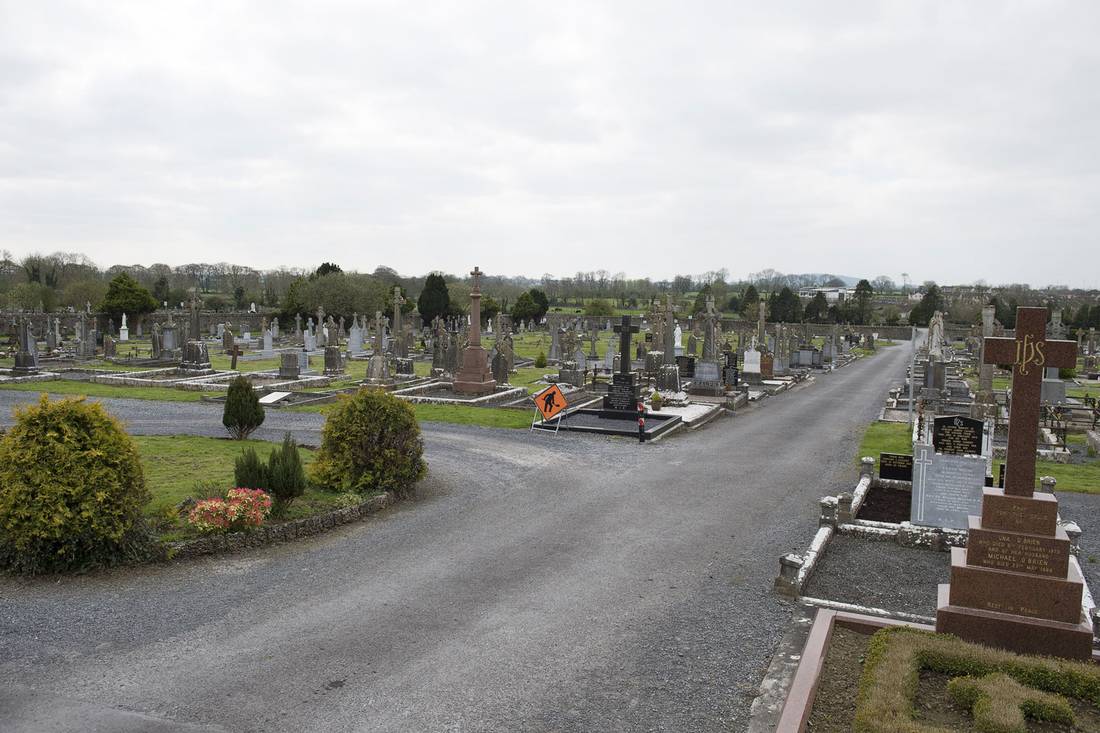
"They used to die like flies. There were no antibiotics. Scores of the children died under [the age of] a year, and whooping cough was epidemic. If the child died under a year there was always enquiries. There wasn't as much about it if the child was over a year. Under a year, the inspectors put it down to neglect. They would look upon it as natural if the child was over a year because the child would be more open to diseases." And there was a place they put the bodies. "Sure, they had a little graveyard of their own up there. It's still there."
The voice belongs to Julia Carter Devaney. Before she died in 1985, she made a series of tape recordings, which remained secret until 2015, when excerpts ran in The Tuam Herald. Now submitted as evidence to the Commission of Investigation, her descriptions rise like the voice of a ghost who has come back to right a wrong. (Through a source, The Globe obtained a copy Ms. Carter Devaney entered the Tuam home in 1925, the year it opened, at the age of 9. Orphaned after her birth, she had spent her youth in a children's home to the north of Tuam. Upon arrival in St. Mary's, she lived as a child resident and later as an unpaid domestic servant. She was there on the night it closed in 1961, turning the key in the lock during a storm of high winds and angry skies that sent slates flying off its roof.
For almost 40 years, she witnessed what took place inside. As toddlers, by which time their mothers had been forced to leave the home, the children were put in a big room, 20 all together. There were no toys or books, "never any effort to teach them anything," Ms. Carter Devaney said. They spoke their own unintelligible language, a tribe of the neglected. Marched in drills from one room to the next, they were "always in twos like soldiers. You would hear them wailing and crying, choruses of crying," she says. "The children would be trying to get up on your knees and trying to love you, looking for affection. They were like chickens in a coop, all reared in a batch."
They ran around without clothes, positioned every half an hour on potties placed around the room. "I think they spent most of their young lives sitting on them pots," she continued. Even so, they soiled the floors. Part of the resident mothers' duties was to clean up after them, mopping the floors with ammonia and water, kept in a bucket to one side. "I feel that the nuns were not serving God, but serving the Galway County Council," she said. "You could see no vocation. One young nun who came there, I remember her say, 'I'd rather be minding pigs.'"
Ms. Carter Devaney knew all the nuns, almost 20 in all, operating in a kind of "secret society" within the home, where they made their own rules.
Reverend Mother Hortense was kind, she recalled, but would still condemn mothers she deemed troublesome to a Magdalene Laundry. Mother Martha, her successor, "like Queen Victoria she was," ruled with an iron hand. A large, domineering woman, "her chest would nearly hit off the wall when she came in the door," in her starched habit. "Life wasn't worth living with her. If she missed you gone out of the place, she'd be looking everywhere for you."
And there was Sister Celestine, an odd creature who had an obsession with cleanliness. Every Saturday night, she would change her clothes and burn them in the furnace. Her face was red and rough from frequent scrubbing.
Expectant mothers - about 2,000 of whom passed through the home during Ms. Carter Devaney's time there - were not allowed to take communion for three weeks after they first arrived. "That was so mothers could reflect on their sin so they would be fit to receive at the altar," she said. They worked all day, right up until they delivered their child, with little or no medical attention, and no medication for childbirth. Pain was their penance. After 10 days on the maternity ward, they were back at work, cleaning and looking after the children in the home.
None of the mothers or children received good food with the exception of an occasional cake and, at one point, some soup for the children when one of the nuns worried about their poor health. The women ate porridge for breakfast, a watery stew for lunch and bread and butter for dinner. At meal times, the children were seated at long tables, and the mothers would circulate around, spoon-feeding them from a big pot of porridge or mashed potato, never a solid diet. "They were undersized children. All they got was starchy food. They were all pot-bellied," Ms. Carter Devaney reported.
n the grounds, the nuns reared pigs and chickens. There was a vegetable garden - "cabbage, onions, lettuce, beetroot, parsnips, a lovely bit of sweet peas, tomatoes in the glasshouse," Ms. Carter Devaney said. But the nuns kept the best food for themselves. They also prepared dinners for county councillors - "a glorious feed; it would be like the Last Supper" - when they visited once every three months.
If parents came to visit their unwed daughters, they entered the home under cover of darkness, lest anyone see them. A guard would be sent to fetch the mothers if they managed to escape or step outside the gates during their time of incarceration. The women were lonely, meeting in groups at the toilets to talk. No one gave them advice or comfort. "The mothers used to belt the hell out of the little children probably mothers frustrated and taking it out on other children," Ms. Carter Devaney said. "'Twas a house of tears and a house of sorrow." On the traditional Irish bonfire night, June 23, when music was played on a nearby road, some of the women would crane their heads out of the windows, sustained by memories of laughter.
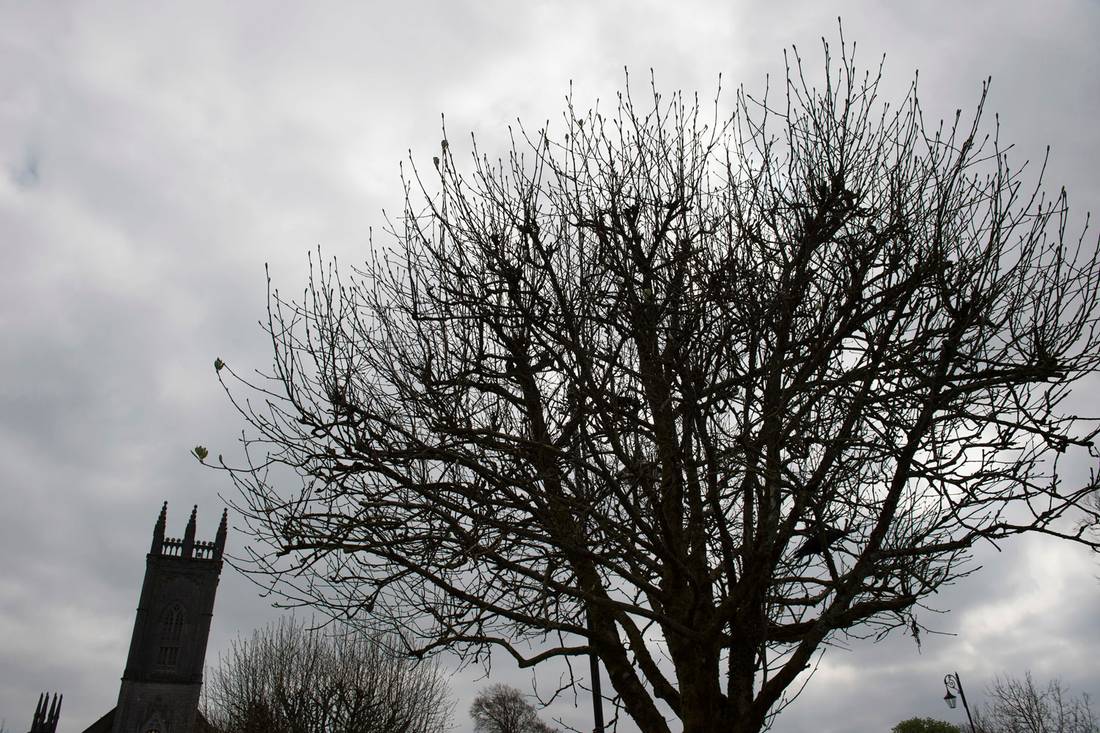
Nothing shouts for attention in Tuam, not the storefronts, not the people. Most of the retail signage is faded with vintage graphics, seemingly untouched since the 1950s. People's willingness to talk swings open and closed like a door in the wind.
Hospitality is an instinct, but so is shame. In McDonagh's Pub and Shop, a traditional Irish pub with shelves of sparse groceries in front, men gather on a weekday evening at the back, where the bar is. They're immediately friendly, buying me a pint of Guinness. We speak of Irish connections to Canada, family ancestors, the beauty of the landscape. At one point, one of them presses a small, penny-store rosary he has retrieved from the back into the palm of my hand after I express interest in them as beautiful, religious objects. "It belonged to my mother," he coos. "Don't lose it. I'll be disappointed." In a mutual exchange of blarney, I tell him I will treasure it forever.
But when I gently turn the conversation to the scandal over the mother and baby home, they immediately look down into their dark, foamy beers. They shake their heads, as if wanting to rid themselves of the memory of the children they called the "home babies." They were cruel to them. They know this. Many of the survivors describe being bullied in the communities where they lived in foster homes. "The abuse I got was shocking," Mr. Haverty told me during the survivors' meeting. "Other children knew there wasn't something natural about you, looking at you the way they look at [travelling Gypsies], calling you names, calling you bastard." Mr. Mulryan remembered that no one would sit with him in school, where he would arrive from his foster home in wet and dirty clothes. Not even the teachers were concerned about his well-being. In church, he was not allowed to serve mass because of his "illegitimacy."
The alienation started when they were still at the mother and baby home. Every morning of the week, the school-aged children were led through the gates of the home, in rows, by one of the nuns' helpers to attend the primary schools situated down the road.
They were hard to miss. Their institutional clothes were brown and ill-fitting, hanging off their thin frames; their hair cut bluntly; their skin often covered in rashes. Some would stoop to pick up rubbish and discarded food off the ground to eat it, one of the men in the pub recalled. And everyone remembers the telltale click-clacking of their clog-like hobnail boots on the sidewalk - an instant branding.
Brought into school later than the other children, they were dismissed before them, too, a routine to help prevent friendships. Punishment for misbehaviour by the town's children was to sit with the "home babies" at the back of the room.
These memories spool out in the dim light of the pub, threaded with quiet regret. Last November, Sadie Cramer, a local artist and healer who started the Tuam Spirit Babies Facebook page, organized a vigil at the gravesite. Nearly 300 people attended, survivors and townspeople together. "It was very healing for everyone," she had told me. But not everyone approves of the search for truth. "There is no future in the past," one pensioner whispers over his beer, shaking his head in dismay.
Some in Ireland feel that people are ready for a new version of national identity, one that integrates the history and prevalence of abuse. "We are a culture that has gone through quite a revision of the sense of ourselves," says Lindsey Earner-Byrne, professor of history at University College Dublin and author of Mother and Child: Maternity and Child Welfare in Dublin, 1922-1960. "This fits into a general sense of negativity about ourselves. One thing the Irish found about the [post-2008] recession was the humiliation. We were always the one, cool peasant member of the [European Union]. That turned out to be a sham. So what else is a sham?"
But denial can be as stubborn as faith in some people. And so can be the belief that the punitive culture of abuse only concerns the past and has no through-line to the present, echoed in issues such as the country's essential outlaw of abortion. "There is no future in the past," repeats the pensioner with dark caution.
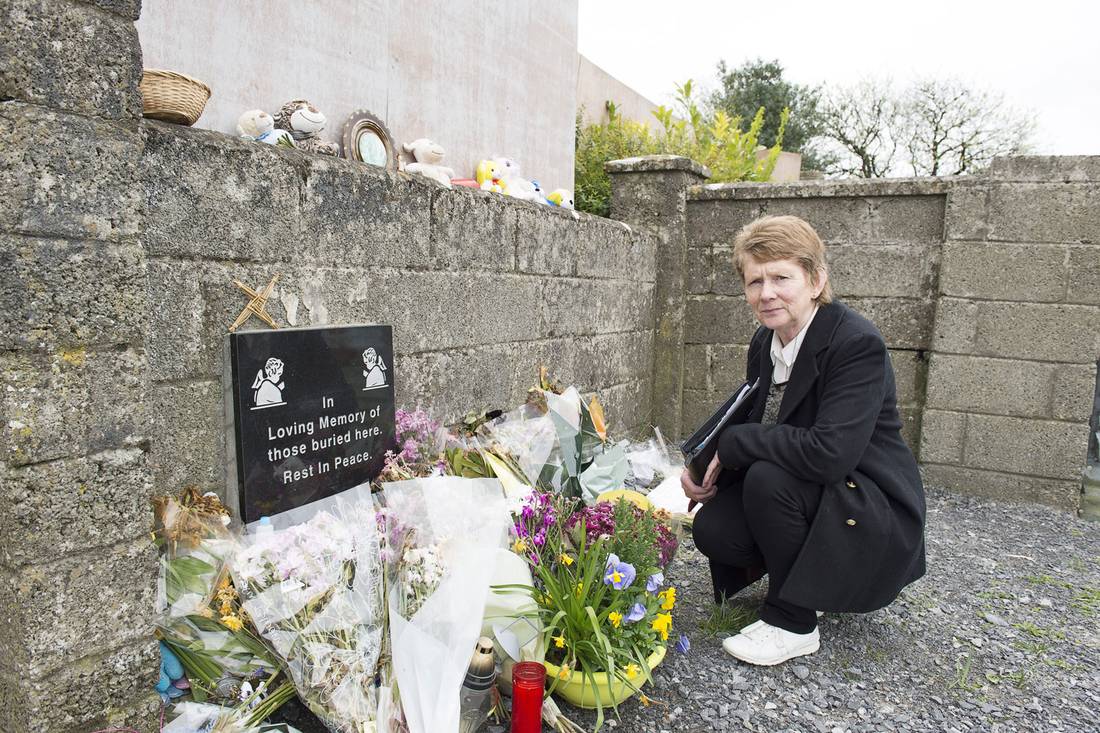
"The church isn't listening. The archbishop wouldn't meet with them. You can see how [the survivors] feel: being rejected all over again even at this stage of their lives," Ms. Corless says.
An unlikely heroine of Ireland - the recipient of spontaneous standing ovations, once by the studio audience of The Late Late Show, a popular Irish TV talk show, and again at the April meeting with survivors - she stands in her cozy kitchen in a two-storey home on the outskirts of Tuam. Filled with pictures of her family, a few of Jesus, a plaque of the Virgin Mother and other mementos, it is her central command, a place where she's more likely to produce bombshells than biscuits.
The archbishop gives a report that they have no records of the home so he knows nothing. And yet a priest held mass there every morning, baptized the children, made regular visits. So how could they come out and say they know nothing?"
She shakes her head in gentle disbelief.
On a wooden table in the middle of the kitchen sit turrets of research papers and folders containing notes, maps and archival documents. A cat sleeps on top of an AGA oven. Beside it on a counter is a photocopying machine. Next to it: an open laptop computer, given to her as a Christmas present by her husband, Aidan. "He says there is no choice but to be supportive" of her research and work with the survivors, she comments, cracking a smile.
At the group meeting a few days earlier, Mary Moriarty, who has owned a house on the council estate since it was built, explained how she had fallen into a hole in 1975 on an overgrown portion of the grounds of the former mother and baby home. She had gone to investigate the area after several boys reported finding skulls and bones. It is key testimony she has also given to the commission. "I fell down as the ground gave way," she said to me. "I was standing in something I looked down. I saw little bundles rolled in cloth, grey and black and damp-looking." They were the bodies of babies, wrapped in blackened swaddling cloth, stacked like loaves of bread in a baker's cooling rack.
Ms. Corless pulls out drawings of a Victorian workhouse, obtained at the National Archives, to explain her theory on what the nuns did with the bodies of the dead children. Excavations of the site had identified two large structures - a sewage-treatment system filled with rubble and another long structure, divided into 20 chambers. In 17 of those chambers, remains of children were discovered.
"There were underground tunnels," Ms. Corless says, laying out architectural drawings of the underground sewage-treatment system. All the workhouses across the country were the same design, created to the exact specifications of British architect George Wilkinson. "They could have walked down through them. They were cleaned out. There were steps down," she says, one sentence following the other in a solemn, measured march.
"The tunnels themselves were five feet in height, leading to a septic-tank structure that is seven-feet high."
She turns to put the kettle on. "Coffee? Tea?" she asks.
"I knew that the old sewage system closed down for the home in 1937," she continues with her back turned as she looks in the cupboard for cookies. At that time, the home was hooked up to the town's sewage system. "It is documented. And I thought, 'Okay, they have an underground system and massive cesspits that aren't being used any more."
There is no pride in her allegations; no rancour. "I know exactly where the other tanks are because of the map of the old workhouse. There are more. She hopes to have those areas excavated, too.
But why bury the children this way?
The kettle whistles.
"They would have had to buy those plots in the cemetery for all those babies," she answers while she attends to making tea. "It was [a matter of] money and it was more or less to keep quiet." The cost of burying a child in the 1940s or 50s would have been about £5 (approximately $8 Canadian). Some have suggested that the Bon Secours, a French religious order, used the pits as ossuaries - a common burial practice in France. But the Irish have come to suspect the worst from religious orders. Evidence during a reburial in 1993 of women's bodies at a former Magdalene Laundry in Dublin showed that nuns were often cost-conscious. They cremated the remains of the Magdalene women in order to save money, even though the practice is contrary to church teachings.
Ms. Corless places a cup of tea on the table. A plate of plain cookies arrives.
Then out comes more documentation: It's a copy of minutes of meetings and memos from Galway County Council in 1979. "Read that there," she says, pushing it across the table. "They refer to the children's burial ground. They knew. They were talking about it. And yet now they deny they knew anything about it."
It's true. On Dec. 17, 1979, there's a note to "provide playing equipment on children's burial ground." She also has a map showing the area before the housing estate was completed in 1977. "How good are your eyes?" she asks before retrieving a large magnifying lens. "See that corner there? That's where the excavation took place. When the estate was finished, this area wasn't touched because they knew whatever was there, they shouldn't touch."
The youngest of five children, Ms. Corless grew up in a Catholic family on a farm on the outskirts of Tuam. She recalls walking down the road to school and seeing the "home babies" when she was a schoolgirl. Once, at the age of 6, she played a trick on a girl from the home, copying others who did the same thing. She wrapped up a small stone in a candy wrapper and handed it to a "home baby." The girl was delighted that someone was giving her a present, until she discovered what was inside.
"I thought it was funny at the time," Ms. Corless says in her same even tone of voice. "But it haunted me. I realized I shouldn't have done it. They got nothing. Ever. No sweets, Nothing."
But that isn't why she began gathering information. A former receptionist who stayed at home to look after her children, she started her research to understand her family history, specifically about her mother. "She was a very quiet, very reserved woman," Ms. Corless says, adding that she was not from County Galway. All three of her mother's brothers had died. And she wouldn't say much about her family.
"It was only when she died in 1992 that I thought I would find out more about her." Ms. Corless found her mother's birth certificate from 1912. "The father's name was blank. I knew then that she had been born out of wedlock." Her mother never told anyone. "I doubt my father would even have known."
In 2011, Ms. Corless started to investigate the Tuam home because little had been written about it. She had produced essays for the annual historical society journal, having taken a certificate course in how to research local history. But she soon discovered that information about the Tuam home was hard, if not impossible, to access. Her curiosity piqued, she eventually gained access to some of the records with the help of a lawyer and some government officials in Dublin.
Her interest in the Tuam home is "like a magnet or something. I have no explanation," she says, admitting that the ongoing story and investigation has taken over her life.
"When I met those survivors, I could see my mother in them," she offers unprompted a moment or two later. "The low self-esteem, not feeling worthy."
In 2014, she built a model of the St. Mary's home, measuring about three feet by four feet, which she brings in from the outdoor shed and places on the kitchen table. A labour of love, it's a painted replica of the three-storey stone buildings, set back from the road and configured in a long central hub with adjoining wings and yards. "Because there are no photographs of the home," she says as explanation. "I did it for the survivors, to help bring their memory back, to see what it was like."
In her quiet, unflappable certitude, there's a nun-like quality to her - the good kind - all self-effacement and gentle kindness. Her sense of piousness is hard to pinpoint. It's not about formal religion. As a girl, she was put off by the Catholic Church and instead understands God as "a beautiful being a good energy."
It's more about the restorative comfort of truth.
The survivors don't want a redress scheme, she explains at one point. "That would be blood money. First and foremost they want the truth. They want acknowledgment that this happened."
She opens her front door to a scene of sheep on a grassy knoll across a narrow road, a beam of sunlight breaking through misty clouds. "People know in their heart and soul that what I'm saying is true," she offers as part of a farewell. "They just don't want to say it."
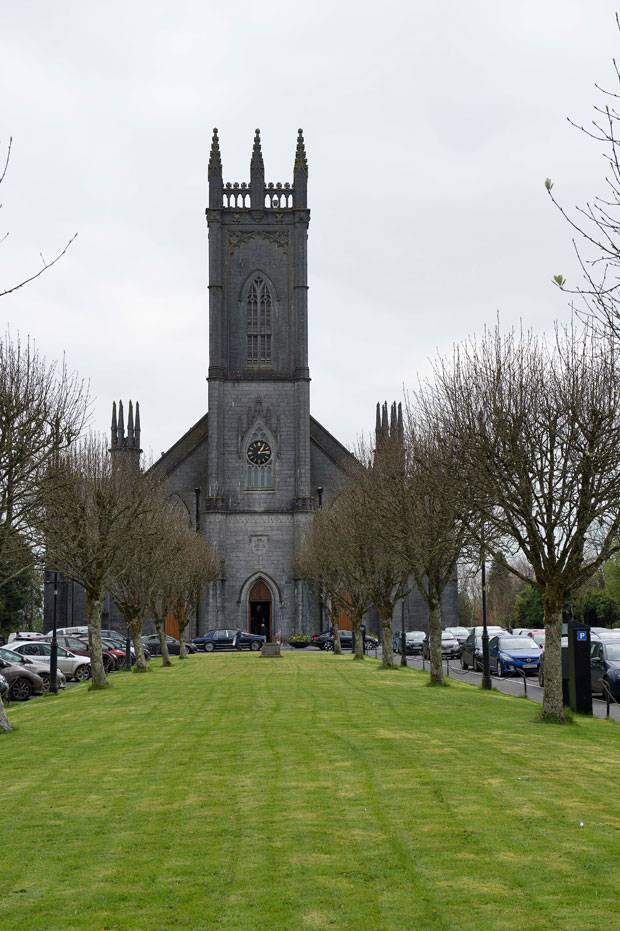
I drove for hours one day during my time in Tuam, eager to find some comfort in the belly of the landscape and make my way to the craggy fingers of the land poking west into a raging sea. The land feels like a living thing, rising up in mountains; exhaling into long, undulating stretches of moor, illuminated here and there by a bright smile of yellow gorse. She is a witchy, moody creature, at one turn consoling and gentle, at the next, wild and merciless. For this, there are words, of course. Plenty of them. And most have been written. The Irish landscape has been famously feminized, notably in works such as Cathleen ni Houlihan, a fiercely nationalistic one-act play written in 1902 by William Butler Yeats and Lady Gregory in which the land is a heroine who in the end appears as a picture of youth with "the walk of a queen" once the young men decide to sacrifice their lives to fight for her independence.
Perhaps none of this Tuam scandal should surprise us: Death and blood often accompany a pursuit of ideals. And yet this story of murder in a lush, green land feels insidious, covert, creepy. For this, it is hard to find words. Just as death is a fact, plain and simple, so, too, is cruelty. This was a strict, religious paternalistic regime, relentless in its attempt to control women's bodies - virgin landscape they wanted to claim and patrol. That truth demands just to be stated; captured in quotes; the facts laid out for all to see, like a corpse.
"To give birth outside of marriage was [considered] less than human," Anna MacKay said in reference to her mother, her voice trembling. "It was exactly the same as the concentration camps. If you allow someone to treat someone as less than human, you can do anything to that person." The men who raped the women or got them pregnant are not part of the discourse; invisible and nameless, including on the birth certificates of the children they fathered out of wedlock.
Ironically, it was the crippling of the male survivors that struck me most - those white men, the kind we often accuse of possessing privilege, the new pejorative in contemporary society, seated humbly in their chairs, many of them emotionally handicapped by their experience. Their wives looked on as they spoke, silent, strong and understanding like surrogate mothers, embodiments of an enduring and mythic Irish stereotype for women - the beloved and self-sacrificing Irish mammy. For all of the survivors, Ms. Corless rises as the uber maternal figure. "It's amazing that there is some human being who wants to help us," Mr. Mulryan said about her. At an age when many people begin to shape the next chapter, reconciling and building upon themes that run through the narratives of their lives, the survivors are only beginning to understand their unwritten genesis, piecing it together bit by bit.
So much has yet to be said and uncovered. A request for an interview with the Archbishop of Tuam, Dr. Michael Neary, was turned down in an e-mail along with links to two homilies about the scandal delivered in the cathedral in March. There had been an expression of shock and sadness, a welcoming of the investigation, an assertion that "the archdiocese did not have any involvement in the running of the home in Tuam" and blame for "that time and society when - instead of being cherished - particular children and their mothers were not welcomed, they were not wanted and they were not loved." That the church was responsible for setting the moral code of the time was not acknowledged in the least.
I went to the cathedral several times, hoping to understand something. For the Chrism ceremony during Holy Week, priests from the diocese gathered in the cathedral to renew their vows. A few nuns attended as well. Archbishop Neary presided. Oils were blessed. Hymns were sung. Incense was wafted. Their faces, all of them, a mask of solemnity. There was a sense of automation to the rituals, a robotic cadence to the words, like those of the women who kneel in the pews at the back every morning after mass, repeating in unison their Hail Mary prayer to the mother who was a virgin.
The nuns from the Bon Secours order don't talk to the media. A wealthy organization with health-care facilities throughout the country, its members mostly refer inquiries to a public-relations firm. But Sister Maeve O'Sullivan, aged 97, one of only a few known living nuns from that era, spoke to me when I called her phone number without warning. "No institution matches a family. As far as they could, the nuns did their best," she said when asked about the scandal. She is a retired nun with the Daughters of Charity of Saint Vincent de Paul, the religious order that ran the mother and baby home at St. Patrick's on Navan Road in Dublin, which is also under investigation. She never worked in a mother and baby home, she said, but for many years she has helped people who were born at St. Patrick's find their birth mothers. "The media is anti-religious," she continued, telling the story of how two men who were looking for their records refused to meet with her. "They didn't want to speak to a 'perpetrator of abuse,'" she said, quoting them. "That's not nice, being called that by a total stranger." I told her I was trying to understand the reported cruelty of the sisters. "Some of them are loving, and some of them are cruel. They're human beings. They're not all saints. It's too much to expect that everybody would be perfect," she explained before cutting off our conversation and wishing me luck with the story.
The question remains about the political will to recover and expose the truth. "We've set up the Commission of Investigation ... for the very purpose of determining the truth and veracity and all these things, and we hope it does its job and does it well," said Enda Kenny when asked about the mother and baby home scandal during an exclusive interview with Globe and Mail journalists while he was in Canada earlier this year. But many express doubts about the investigation, calling it "an Irish solution to an Irish problem," meaning that it will be incomplete and fail to fully address the needs of the survivors.
The Commission of Investigation into Mother and Baby Homes is under the auspices of the Commissions of Investigation Act of 2004, a piece of legislation that "is a wonderful way to ensure that the truth will never come out," says Prof. O'Donnell at University College Dublin. Testimony submitted to any Commission of Investigation cannot be repeated publicly, remains beyond the reach of Freedom of Information requests and can never be used in a criminal prosecution. The archives for the McAleese Report into the Magdalene Laundries and the Ryan Report into clerical abuse have also been closed to public access. With the current Commission of Investigation framework, "It will mean that no one will be able to write about the 20th and the 21st-century Ireland with evidence," says Prof. O'Donnell. As a countermeasure, two organizations, the Adoption Rights Alliance and Justice for Magdalenes, have set up their own "shadow investigation," called The Clann Project. With the pro-bono help of law firm Hogan Lovells, they're collecting testimony and evidence to produce a historical narrative that is accurate and accessible - the people's attempt at a truth-telling process.
Almost two months after the April meeting in Tuam, Ms. Zappone gave the survivors, activists and academics reason to hope that the government was taking the investigation and the wishes of the survivors seriously. Ms. Zappone has held three meetings with the survivors. A fourth is scheduled for early October. She announced the appointment of Niamh McCullagh, a respected forensic archeologist, to bring together a team of international experts in juvenile osteoarcheology, forensic excavation and DNA analysis to advise on how to handle the Tuam gravesite. She ordered a geophysical survey of the gravesite area to determine what lies underneath and promised improved communication and better access to records. She also announced that a United Nations expert would consult with the government about the possibility of a truth and reconciliation approach to the issue. "It is time we all shouted stop," she said to one media outlet, saying that the country needed to face its responsibilities. She has declined to comment further after several requests by The Globe. The new Taoiseach, Mr. Varadkar, has stated that Ms. Zappone will remain in her position as Minister of Children and Youth Affairs, a positive acknowledgment of the investigation's importance, say the activists.
"We're all a bit overwhelmed," said Ms. Corless about the series of announcements in June. "It's a huge step forward. [Ms. Zappone] seems to be truly passionate about getting it right."
But doubts remain. Activists say that the needs of the survivors have not been addressed - there is no access to records, as promised in the April meeting, and no counselling services, which are urgently needed, they say. The gravesite has still not been designated a crime scene. And how the remains have been preserved or treated remains unknown.
Ms. Zappone has talked about the possibility of a truth commission. The opposition party, Sinn Fein, has run with the sense of outrage over the story, calling for reconciliation and truth-telling, but most see these pronouncements as hollow. "I cannot envisage any forum being put in place by the Irish state that would gather and publish anything like the substantive truth when it comes to the identification of responsibility," Kevin Higgins, the lawyer, commented in an e-mail, dashing the hopes of those who want a truth commission similar to that in Canada and South Africa. "Truth is always at a premium in Ireland," he noted.
Indeed, truth is a complicated subject in this country. On my drive into the countryside, I stopped at Knock, a small village north of Tuam and an important religious site, where the Virgin Mary, Saint Joseph, Saint John the Evangelist and Jesus Christ reportedly appeared in 1879. The Archbishop of Tuam at the time ordered a thorough commission of inquiry, gathering extensive witness testimony. It was inconclusive but eventually the church accepted the apparition as true. One hundred years later, even the Pope made a pilgrimage to visit the Shrine at Knock.
I thought about that on my journey along the back roads: faith in that for which there is no factual basis and yet disbelief about occurrences for which there is.
Truth is like an infant. It wants attention, and it will insist, crying out, until it gets what it needs. And there is time. The commission's final report is not due until early 2018. Truth needs someone who is patient and accepting of whatever it becomes; someone who will help it find its voice and confidence. It needs a loving parent.
In her kitchen, Ms. Corless had told me something that stayed in my mind. "It was almost as if those little bones were crying out for recognition," she said. "You can feel it when you go to the graveyard." Sadie Cramer, the artist and healer, had similar experiences. "The recurring vision for me was pure white babies' arms coming out of the ground, hundreds and hundreds of them," she told me over lunch. "They are calling to me. Anybody connected to this has felt these children calling to them."
Sarah Hampson is a feature writer with The Globe and Mail.

